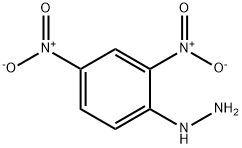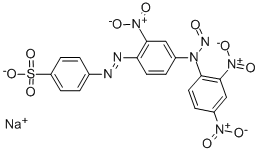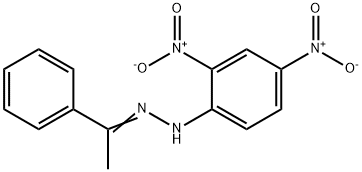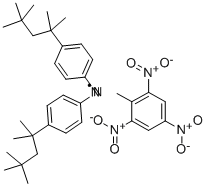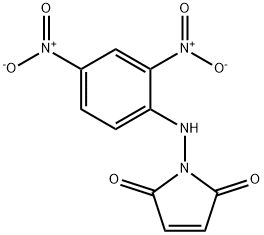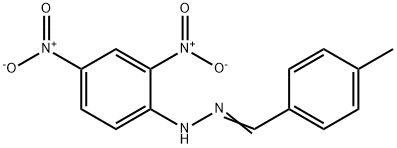2,4-Dinitrophenylhydrazine , AR,≥98.0%(HPLC) , 119-26-6
CAS NO.:119-26-6
Empirical Formula: C6H6N4O4
Molecular Weight: 198.14
MDL number: MFCD00007578
EINECS: 204-309-3
PRODUCT Properties
| Melting point: | 197-200 °C (lit.) |
| Boiling point: | 335.43°C (rough estimate) |
| Density | 0.843 g/mL at 20 °C |
| refractive index | n |
| Flash point: | 14 °C |
| storage temp. | 2-8°C |
| solubility | 50% sulfuric acid: 10 mg/mL, clear, colorless |
| pka | 12.1(at 25℃) |
| form | crystals |
| color | Red |
| PH Range | Yellow (11.0) to brown (12.5) |
| Water Solubility | slightly soluble |
| Merck | 14,3283 |
| BRN | 615586 |
| Stability: | Stable when wet, but explosive when dry. May be shock sensitive when dry. Highly flammable. Incompatible with strong oxidizing agents. |
| Major Application | Fuel cells, detecting microorganisms, antibacterial agent, treatment of acuteand chronic hepatitis, gynecopathy, cardiovascular diseases, cerebrovascular diseases |
| InChIKey | HORQAOAYAYGIBM-UHFFFAOYSA-N |
| CAS DataBase Reference | 119-26-6(CAS DataBase Reference) |
| NIST Chemistry Reference | Hydrazine, (2,4-dinitrophenyl)-(119-26-6) |
| EPA Substance Registry System | 2,4-Dinitrophenylhydrazine (119-26-6) |
Description and Uses
2,4-Dinitrophenylhydrazine (abbreviated 2,4-DNP for short) is the chemical compound C6H3 (NO2) 2NHNH2, and it is often used to qualitatively test for carbonyl groups associated with aldehydes and ketones. The hydrazone derivatives can also be used as evidence toward the identity of the original compound. It is relatively sensitive to shock and friction; it is a shock explosive, so care must be taken with its use. To reduce its explosive hazard, it is usually supplied wet.
2,4-Dinitrophenylhydrazine is a compound with a benzene ring, two Nitro groups, and a hydrazine (two nitrogen atoms bonded directly to each other) functional group. It is used as a Brady's reagent to test the existing of a ketone or aldehyde.
2,4-Dinitrophenylhydrazine has been used as a reagent to detect the presence of aldehydes and ketones in protein carbonyls. It may be used as a colorimetric reagent in the quantitative estimation of prednisone.
Safety
| Symbol(GHS) |   GHS02,GHS07 |
| Signal word | Danger |
| Hazard statements | H206-H302 |
| Precautionary statements | P210-P212-P230-P233-P280-P370+P380+P375-P501 |
| Hazard Codes | F,Xn |
| Risk Statements | 1-11-22-40-2001/11/22 |
| Safety Statements | 35-48A-45-36/37-16 |
| RIDADR | UN 3380 4.1/PG 1 |
| WGK Germany | 3 |
| RTECS | MV3325000 |
| F | 8 |
| HazardClass | 4.1 |
| PackingGroup | II |
| HS Code | 29280000 |

